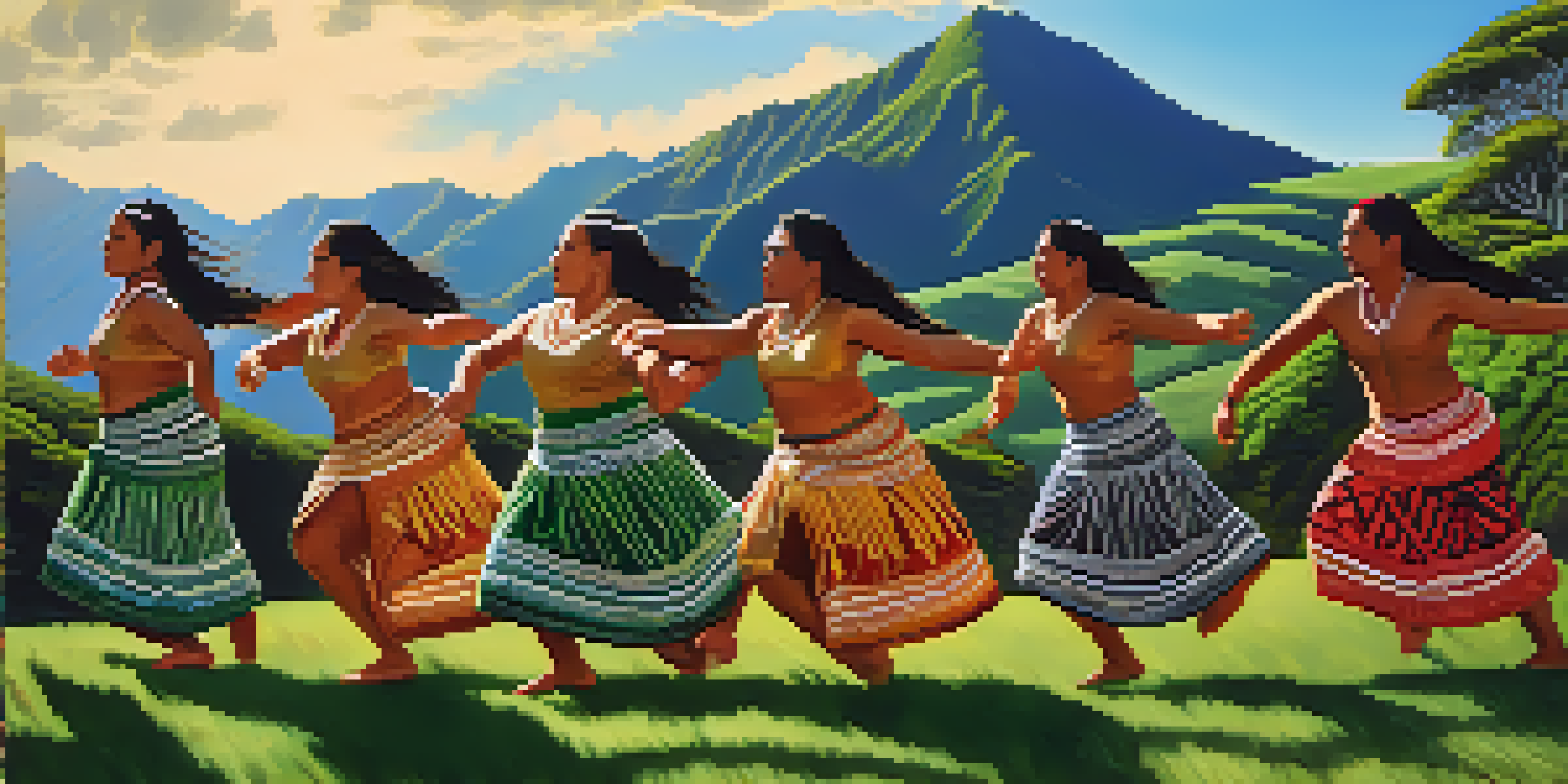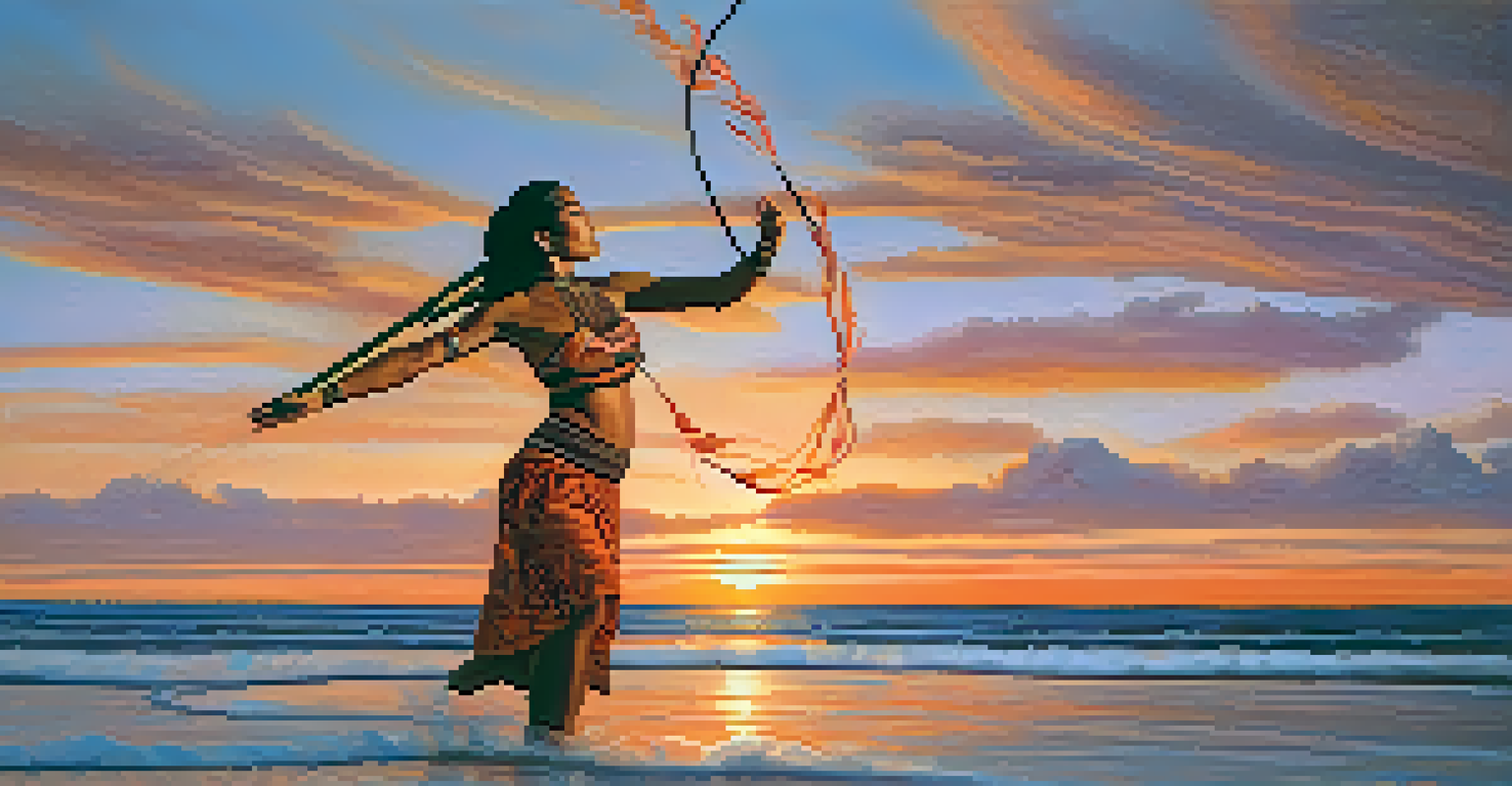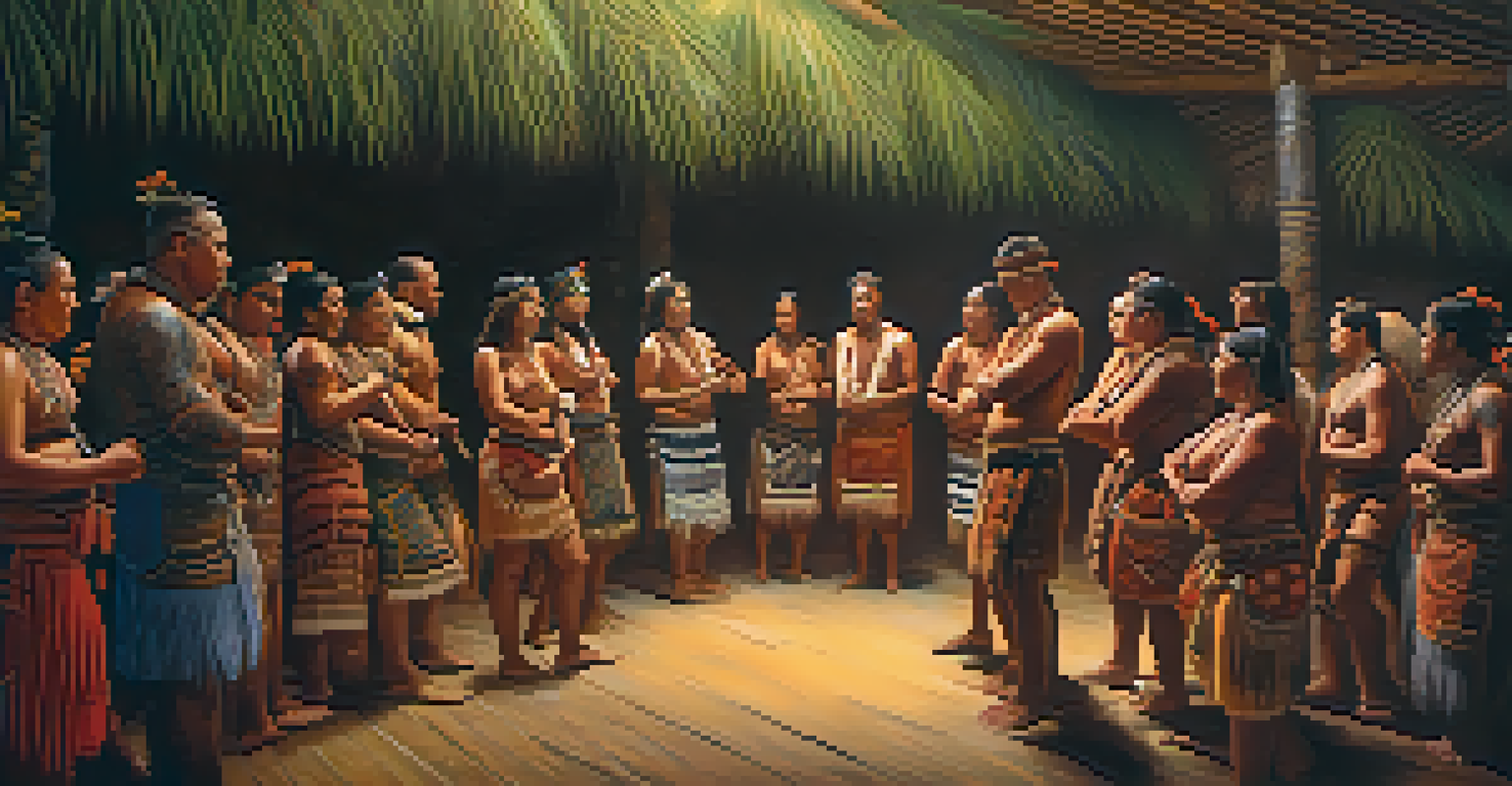Ritual Dance in the Maori Culture: Healing Through Movement

Understanding Maori Culture and Its Spiritual Roots
Maori culture, rich in traditions and spirituality, is an integral part of New Zealand's identity. Central to this culture is the belief in the connection between the physical and spiritual worlds. Ritual dances, known as 'haka' and 'poi,' play a vital role in expressing these connections and honoring ancestors.
Dance is the hidden language of the soul.
These dances are more than mere performances; they embody stories, emotions, and cultural values passed down through generations. Each movement has significance, often representing historical events, tribal identities, or spiritual beliefs. This deep-rooted connection makes ritual dance a powerful medium for healing and personal expression.
For many Maori, participating in these dances is a way to connect with their heritage and community. It fosters a sense of belonging, reminding individuals of their place within the larger tapestry of Maori culture.
The Role of Dance in Healing Practices
Healing through movement is a concept that transcends cultures, and for the Maori, ritual dance serves as a therapeutic practice. The rhythmic movements and chants in these dances can evoke emotional release, helping individuals confront and process grief or trauma. This cathartic experience often leads to personal healing, both physically and emotionally.

Moreover, the communal aspect of these dances strengthens social bonds. When people come together to participate in ritual dances, they create a supportive environment where healing can flourish. This sense of community is vital for mental well-being, as it provides comfort and reassurance in times of distress.
Ritual Dance and Healing
Maori ritual dance serves as a powerful therapeutic practice, fostering emotional release and community support.
In this way, ritual dance acts as a bridge between individual healing and collective support. It reinforces the idea that healing is not a solitary journey but one that is shared within the community.
Haka: More Than Just a War Dance
The haka is perhaps the most recognized Maori dance, often associated with warriors preparing for battle. However, this powerful dance serves multiple purposes, including honoring significant life events such as births, weddings, and funerals. Each haka tells a unique story, making it a versatile expression of emotion and intention.
The body says what words cannot.
In contemporary settings, the haka has also been embraced as a form of healing. For instance, many schools and organizations incorporate haka into their programs as a way to promote unity and resilience. This modern adaptation highlights the dance's enduring relevance in fostering emotional well-being.
Ultimately, the haka transcends its historical roots, becoming a means of connecting with one's identity while also serving as a tool for healing and reflection. Its ability to evoke strong emotions makes it a profound experience for both participants and observers.
Poi: Dance of Balance and Harmony
Poi is another integral aspect of Maori ritual dance, characterized by swinging tethered weights in rhythmic patterns. Traditionally performed by women, poi emphasizes grace, coordination, and storytelling through movement. The dance often conveys themes of balance and harmony, mirroring the interconnectedness of life.
The therapeutic benefits of poi extend beyond physical coordination; they also promote mindfulness and mental clarity. As dancers focus on their movements and the accompanying chants, they enter a meditative state that can alleviate stress and anxiety. This makes poi a valuable practice for personal healing.
Cultural Preservation Through Dance
Engaging in traditional Maori dances allows younger generations to connect with their heritage and maintain cultural identity.
Moreover, community poi sessions foster collaboration and connection among participants. The shared experience of learning and performing together creates a sense of unity, reinforcing the idea that healing is enhanced through collective effort.
Ritual Dance as a Means of Cultural Preservation
In an age of globalization, ritual dance serves as a vital means of preserving Maori culture. Engaging in traditional dances allows younger generations to connect with their heritage and learn about their ancestors' values and beliefs. This transmission of cultural knowledge is crucial in maintaining a distinct Maori identity.
By participating in these dances, individuals not only keep traditions alive but also empower themselves through cultural pride. The act of performing becomes a celebration of identity, reinforcing the importance of heritage in the face of modern challenges.
Thus, ritual dance acts as a living archive of cultural history, ensuring that Maori stories and values continue to resonate with future generations. This preservation is essential for the ongoing resilience of the Maori community.
Modern Interpretations of Maori Ritual Dance
As Maori culture evolves, so too does the interpretation of ritual dance. Contemporary artists and performers are incorporating modern elements into traditional dances, creating innovative expressions that resonate with today's audiences. This blending of old and new reflects the dynamic nature of culture and the adaptability of its practices.
These modern interpretations often serve as a platform for discussing contemporary issues, such as identity, social justice, and environmental concerns. By using dance to address these topics, artists not only honor their heritage but also engage with broader societal conversations.
Modern Adaptations of Maori Dance
Contemporary interpretations of Maori ritual dance blend traditional elements with modern themes, keeping the culture relevant and dynamic.
Through these adaptations, ritual dance remains relevant and accessible, inviting all to participate in the healing and storytelling process. This evolution ensures that the spirit of Maori culture continues to thrive in a rapidly changing world.
The Impact of Ritual Dance on Personal Identity
Participating in ritual dance allows individuals to explore and express their personal identities within the context of their cultural heritage. This exploration can lead to a deeper understanding of oneself and one's place within the community. For many, embracing these dances fosters self-acceptance and pride in their roots.
Furthermore, engaging in ritual dance can provide a sense of purpose and direction. As individuals connect with their culture, they often feel empowered to advocate for their community and its values. This empowerment plays a crucial role in fostering resilience and confidence.

Ultimately, the impact of ritual dance extends beyond the individual, influencing the collective identity of the community. As participants share their stories and experiences, they contribute to a rich tapestry of cultural expression that strengthens communal ties.
Conclusion: The Enduring Power of Movement in Healing
Ritual dance holds a unique place in Maori culture, serving as a powerful tool for healing, connection, and cultural preservation. Through movements like haka and poi, individuals engage with their emotions, history, and community, fostering a profound sense of belonging. This healing through movement resonates deeply, transcending the boundaries of time and space.
As we explore the significance of these dances, it becomes clear that they are not just performances but vital expressions of identity and resilience. In a world that often feels disconnected, ritual dance offers a pathway to reconnect with ourselves and each other.
In embracing the power of movement, we can learn valuable lessons about healing, community, and the importance of honoring our cultural heritage. The legacy of Maori ritual dance continues to inspire and uplift, reminding us all of the transformative power of movement.